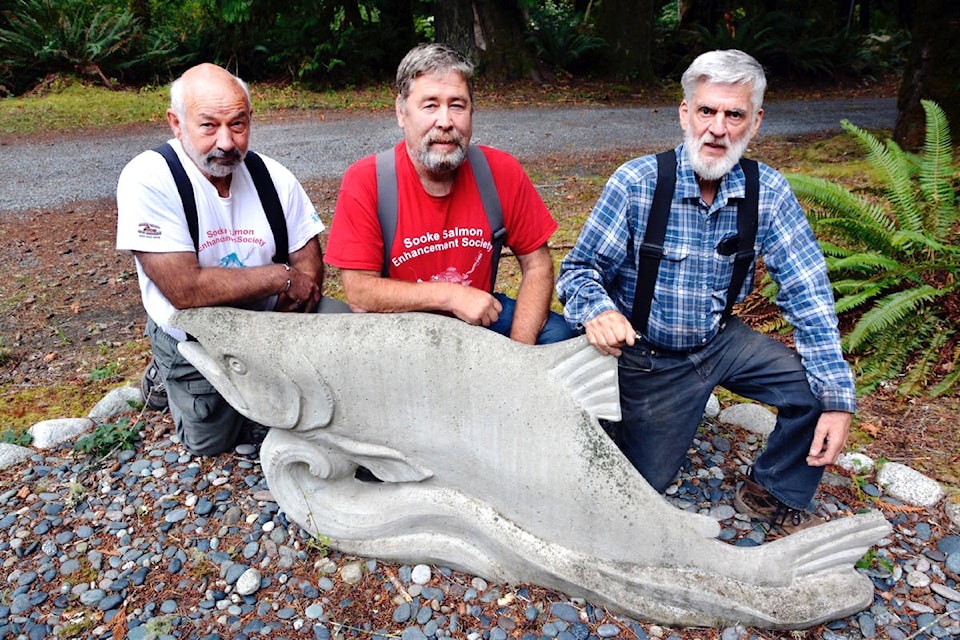A new $1-million salmon hatchery will be built along Charters River under a new partnership between the Sooke Salmon Enhancement Society and the Juan de Fuca Salmon Society.
The Sooke River Jack Brooks Hatchery will be built on land leased to the Charters River Salmon Interpretive Centre on Sooke River Road. The new hatchery will see the closure of the Jack Brooks Hatchery on DeMamiel Creek.
The Capital Regional District has agreed to increase the Sooke reservoir water supply to the new hatchery, with the hopes of taking the salmon run from 500 to 5,000.
The Sooke Salmon Enhancement Society has operated the Jack Brooks Hatchery for more than 40 years, but in recent years dwindling water supplies has made it more difficult to harvest the fish for brood stock.
“We’ve never had the comfort of having a continuous supply of water on DeMamiel Creek,” said society spokesman Bill Pedneault. “Now we’ll be able to start when we want and end when we want.”
With the CRD’s decision to allow more water from the Sooke reservoir, it opened the door for the new hatchery, said Mike Hicks, the CRD’s Juan de Fuca Electoral Area director.
Along with the two societies, the CRD, local First Nations and the Department of Fisheries and Oceans are also backing the project.
RELATED: CRD celebrates salmon, new parkland in Sooke
“The CRD has been a tremendous partner. We’re hoping the District of Sooke, the Pacific Salmon Foundation and the corporate world are going to come on as partners as well,” Hicks said.
Pedneault said the two groups will continue to take coho out of DeMamiel Creek and springs out of the Sooke River. The only difference is that they will be processed at the new facility.
The Jack Brooks Hatchery has a licence to raise 500,000 springs and 150,000 coho fry every year.
“Right now we just can’t hold 500,000 fry to a satisfactory size that would benefit them on release,” Pedneault said. “With the constant flow of water, we’ll be able to raise that 500,000 to release size.”
Hicks added down the road there’s a possibility the hatchery could increase its production.
On average 500 chinook return to local waters, but there’s hope they can get at lease 5,000 returning every year – that’s one per cent of 500,000 fry which they hope to harvest from brood stock.
“Our focus is chinook salmon because we have a crisis with the southern resident killer whales. We feel we will be doing something tremendous for the southern resident killer whales, recreation and commercial fishermen and First Nations fishery,” Hicks said.
Construction of the hatchery is expected to begin next March following the release of this year’s fry. The plan, although considered optimistic, is to have the new facility up and running within a year.
Most of the construction of the hatchery will be done by volunteer labour, said Wally Vowels of the Juan de Fuca Salmon Society, with trades brought into to do specialized work.
“This will be the first hatchery built in years, and it’s an ambitious project,” Hicks said.
“I think it’s the greatest thing, as far as fisheries, that’s ever happened in this area.”
editor@sookenewsmirror.com
Like us on Facebook and follow us on Twitter
